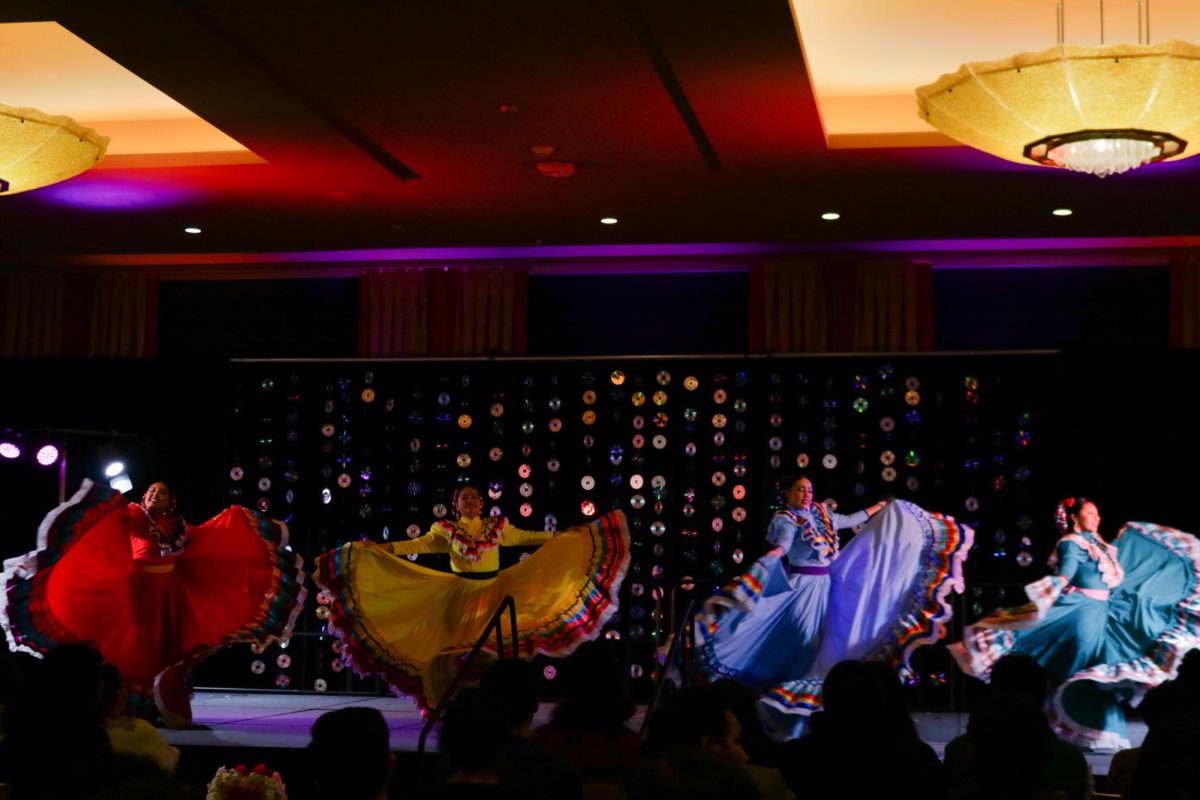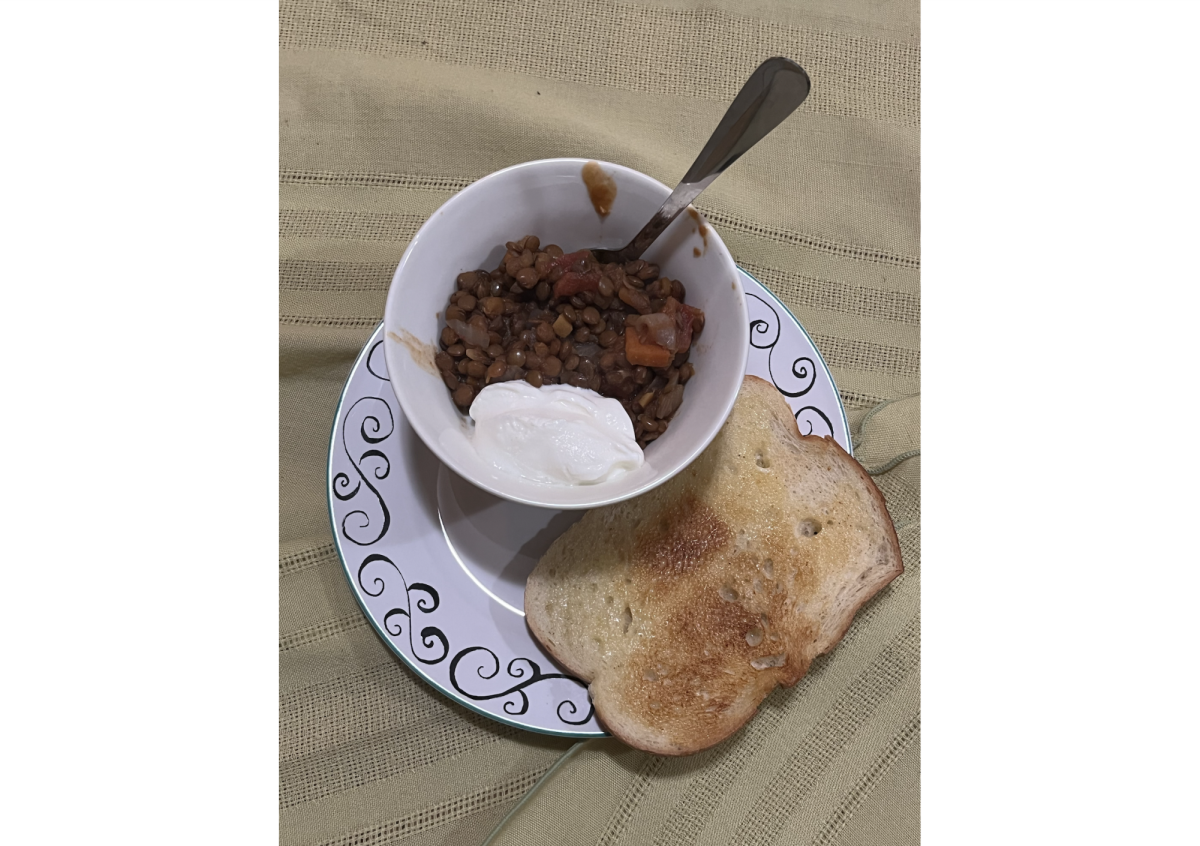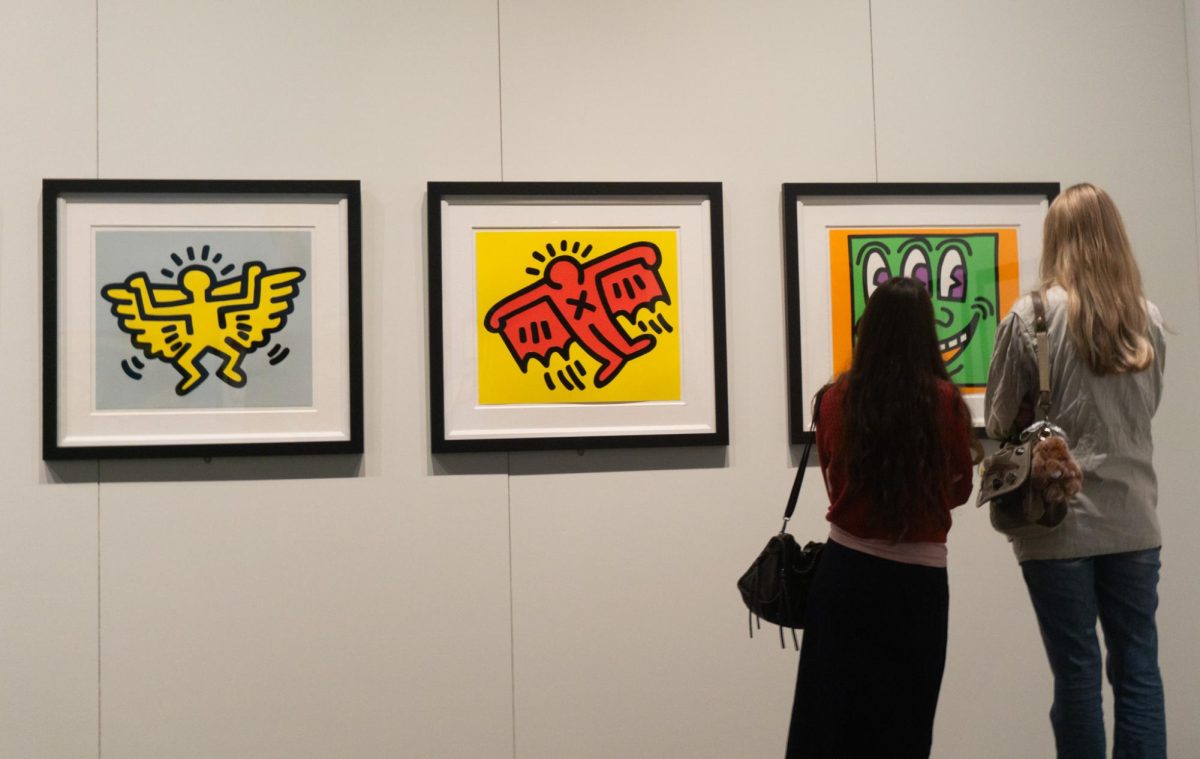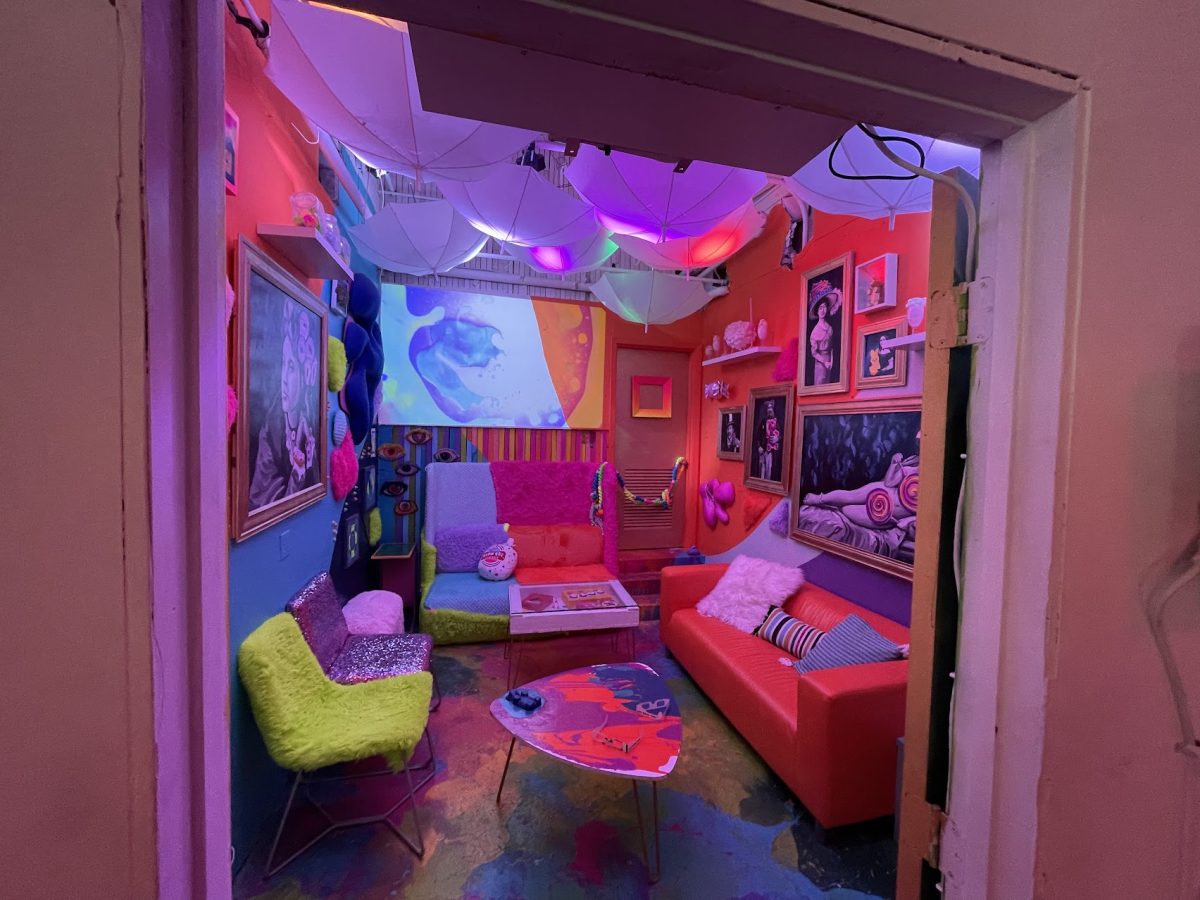Acrylic, mineral oil and graphite are a few of the mediums that New York artist Tavares Strachan experimented with to create intricate, large-scale pieces for his exhibit titled “Always, Sometimes, Never.” His exhibit is on display at the Frye Art Museum and features different elements of art, science, social justice and the environment in his work.
Erica Barrish, the guest curator for Strachan’s exhibit, was able to bring Strachan’s work to Seattle through her previous relationship with the museum.
“Tavares’ work is about science, technology, alchemy and history. I thought that the show and working with him would be an ideal pairing with Seattle,” Barrish aid.
Strachan customized Seattle’s experience by mimicking the rain and bodies of water surrounding the city. Large bodies of water were either directly incorporated into his pieces or were placed in the center of the room to encourage audiences to reflect and to challenge their perceptions.
Kylie Tokujo, a second-year graphic design major, attended the opening and found Strachan’s work inspiring because of the amount of time and effort each piece reflected.
“My favorite collection was the Constellation Series. I read the descriptions after viewing the work which made the pieces all the more special. The meaning behind his work is inspiring and it is clear that he put a lot of time into not only the idea but the creative process as well,” she said.
Strachan’s Constellation Series is comprised of three collaged portraits. One of Queen Min, a Korean political figure who altered the role of women, another of Butch Morris, a musician and composer that created conducting which uses improvisation to guide ensembles, and one of Tenzing Norgay, a Tibetan Sherpa who was the first people to reach the summit of Mount Everest.
The series also left an impression with second-year English major Toni Wells.
“I was moved by the artist’s attention to the matter that makes up the larger whole and how the figures he depicted come to tell their own story if we give them our attention and recognize change. History is made by people we often know nothing about,” she said.
Throughout the exhibit, Wells was constantly reminded that she was a part of something much bigger.
“While we all are small pieces of a much larger picture, we have the capacity to influence culture and society in ways we can’t fully comprehend,” she said.
One of the themes Barrish highlighted in Strachan’s work was community building.
“His work is about community building and how communities hold a part and are brought together based on science, water, technology, the accessibility of information and how we find our grounding within a community,” Barrish said.
Strachan emphasized how those elements within a community are often overlooked in the big picture. Tokujo recognized how Strachan’s theme of invisibility paralleled with the nature of art.
“Strachan illustrated how art can be so much more than what it appears to be. When you look closer, you can really see the detail, meaning and intent. The experience of viewing his art prompts you to look at things a little closer and never be afraid to challenge our perspective,” Tokujo said.
In addition to taking on the challenge to explore beyond her initial observations, Tokujo felt encouraged by the theme of inclusivity present throughout Strachan’s work.
“He really wanted to showcase those who had accomplished so much but were robbed of the recognition they deserved. It was interesting to see that many of the people he showcased were minorities because being a minority myself, it really spoke to me and made me feel empowered,” she said.
Wells finds that Strachan’s collections to be important because it features people and voices that have been silenced.
“We are at a point where people are turning to arts as an act of agency and change and source of truth. Strachan presents a counter narrative to ‘factual’ history by emphasizing its biases that uphold and privilege ‘winners’ and erase the voices and experiences of ‘losers’,” Wells said.
“He tells a different side of history in his collection, A Children’s History of Invisibility, and presents a stark portrayal of fractures that divide us when we identify ourselves as individual entities separate from everyone else in his neon sculptures Us, We, Them and I Belong Here,” Wells concluded.
Strachan’s collection will be on display until April 15. For more information about Strachan’s work, visit the Frye Art Museum online to learn more.







